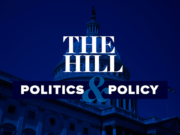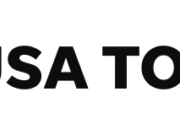Commentators have debated for months what President Donald Trump’s pledge to “drain the swamp” really means. Many believe that the “swamp” represents so-called “special interests.” As the story goes, these groups supposedly skew lawmakers and the political system to their advantage while subverting the will of voters.
However, what constitutes a special interest is very much in the eye of the beholder. And it changes depending on who’s using the term.
On the campaign trail, Trump constantly bashed Hillary Clinton as beholden to “special interests.” Left-leaning news outlets in turn asserted that Trump had special interests of his own. During his transition, those attacks grew ever louder.
The way the term “special interests” is used in practice suggests that it’s simply shorthand for “bad thing my opponent supports.” After all, depending on one’s views, “special interests” may encompass big business or big labor, fossil fuel or green energy companies, and single-issue and ideological groups like the Club for Growth or EMILY’s List.
In fact, one can fairly say that all of those groups are “special interests.” And that’s okay.
“Special interests” – or the more fitting term, advocacy groups – simplify democracy rather than subvert it. Most Americans don’t have the time or ability to analyze legislation, organize grassroots activity, or follow the ins and outs of the political process. Advocacy groups bridge the gap between citizens and government. They communicate their members’ views to public officials and inform the public of important political developments. For every advocacy group with one viewpoint, there is almost certainly another one making the opposite case. Some groups you’ll support, and others you’ll oppose, but they all contribute to the exchange of ideas that makes democracy work.
Furthermore, advocacy groups have the basic right to organize and express their views. The First Amendment protects free speech, free association and the freedom to petition the government. Every American has interests, and every government policy could have a positive or negative impact on different groups. Why shouldn’t they try to win over voters or lawmakers?
For a glimpse at how politicians misuse the term “special interests,” look no further than former President Barack Obama. During the 2008 Democratic presidential primaries, the Obama campaign said that rivals John Edwards and Hillary Clinton benefited from “special interest spending” due to union support for their candidacies – an unusual way for a Democrat to label one of his party’s core constituencies. Later, during the 2012 campaign, Obama hammered Mitt Romney for using similar rhetoric on unions:
They’re out there talking about you like you’re some special interest that needs to be beaten. Since when are hardworking men and women, who are putting in a hard day’s work every day, since when are they special interests? Since when is the idea that we look out for each other a bad thing?
Setting aside his changed feelings between 2008 and 2012, Obama’s point here is instructive. Why is it a bad thing to look after each other? What is so wrong about like-minded people trying to effect change together? That is what groups derided as “special interests” really are.
Obama understood the term “special interests” is an insult. That’s why he no longer applied it to labor unions even though they advocate for their members’ interests like any other advocacy group. He should have made the opposite point: even the “good guys” are a special interest, and everybody is entitled to make their voice heard by government.
Despite the rhetoric of politicians and activists, attacking special interests is a divisive way of preventing an honest exchange of ideas. It devalues the importance of free speech and undermines faith in our political system. Instead, Americans should embrace the fact that everybody has interests and the right to advance them. The alternative is government deciding whose views are worthy of expression, and whose are not. This kind of censorship is in nobody’s interest.
This post originally ran in Forbes on April 26th 2017.














